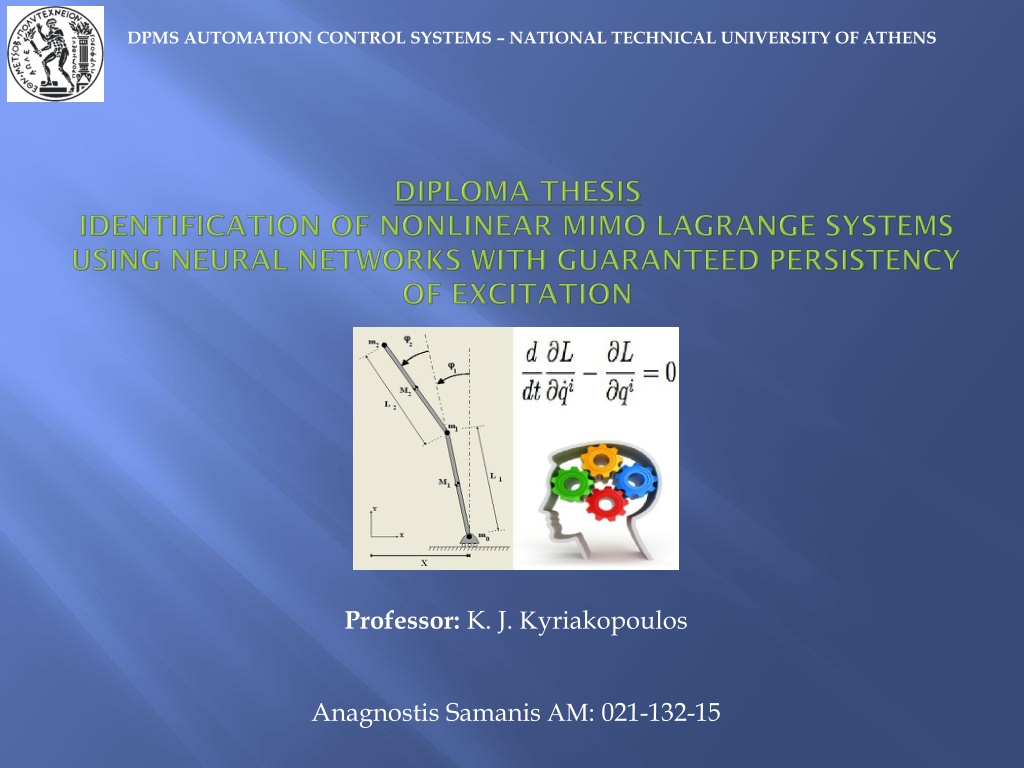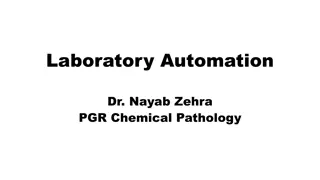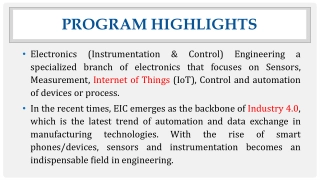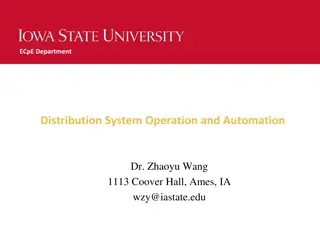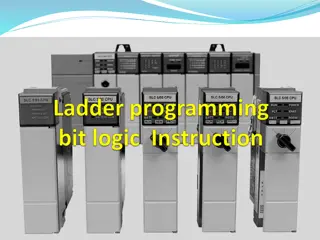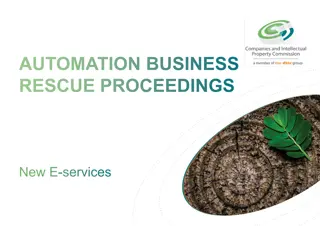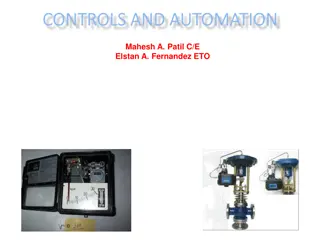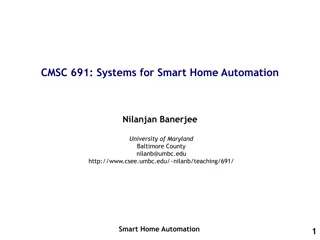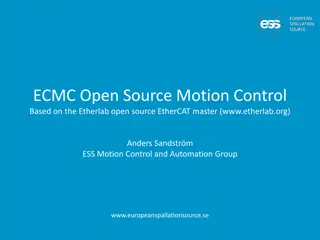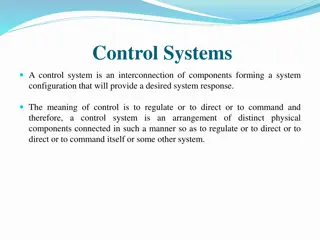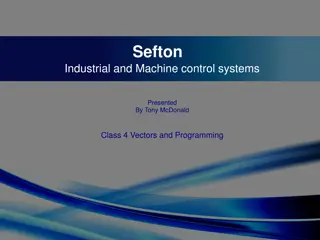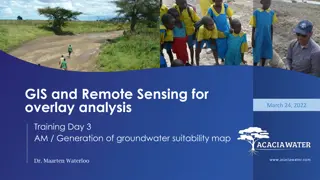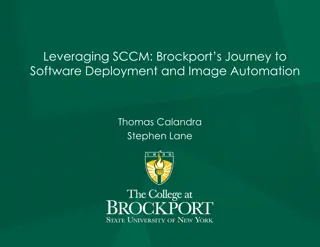Development of Learning Techniques in Automation Control Systems
Development of Learning Techniques in Automation Control Systems at the National Technical University of Athens focuses on system identification, parameter approximation, and achieving control goals using statistical methods and mathematical models. Techniques such as open loop form, closed loop form with adaptive control, and closed loop autonomous learning are discussed, highlighting advantages and weaknesses of each method.
Download Presentation

Please find below an Image/Link to download the presentation.
The content on the website is provided AS IS for your information and personal use only. It may not be sold, licensed, or shared on other websites without obtaining consent from the author. Download presentation by click this link. If you encounter any issues during the download, it is possible that the publisher has removed the file from their server.
E N D
Presentation Transcript
DPMS AUTOMATION CONTROL SYSTEMS NATIONAL TECHNICAL UNIVERSITY OF ATHENS Professor: K. J. yriakopoulos Anagnostis Samanis : 021-132-15
DPMS AUTOMATION CONTROL SYSTEMS NATIONAL TECHNICAL UNIVERSITY OF ATHENS SYSTEM IDENTIFICATION Definition The field which uses statistical methods to build mathematical models of dynamical systems from measured data. First attempts in history 1960s. Learning from control of dynamical systems 1970s. Learning theory for machine learning & computational/statistical learning
DPMS AUTOMATION CONTROL SYSTEMS NATIONAL TECHNICAL UNIVERSITY OF ATHENS NEEDS LED TO DEVELOPMENT OF SYSTEM IDENTIFICATION The approximation of parameters which are parts of nonlinear functions in unknown models of systems The identification of unknown controller parameters to achieve certain control goals and improve system performance Learning about environment or new design goals and constraints
DPMS AUTOMATION CONTROL SYSTEMS NATIONAL TECHNICAL UNIVERSITY OF ATHENS DEVELOPMENT OF LEARNING TECHNIQUES 1. Open loop form Description System with unknown dynamics is excited in an open loop form by applying various inputs Method/Advantage Analyzing system outputs Neural Networks are used providing an estimation of the unknown parts of the system Weakness Weakness to excite the system in a way to stimulate all possible system dynamics inside the region of interest. Learning only achieved in a range of values depending on the excitement.
DPMS AUTOMATION CONTROL SYSTEMS NATIONAL TECHNICAL UNIVERSITY OF ATHENS DEVELOPMENT OF LEARNING TECHNIQUES 2. Closed Loop Form using adaptive control techniques Description Using adaptive control techniques, decrease errors and adjust control parameters. Achieve increased efficiency Method/Advantage Produce a kind of orbits in an attempt to excite as many as possible states of system dynamics in a local area of interest Weakness Cannot ensure a priori the ability to stimulate all system states in a local region of values Limited learning in some regions of values.
DPMS AUTOMATION CONTROL SYSTEMS NATIONAL TECHNICAL UNIVERSITY OF ATHENS DEVELOPMENT OF LEARNING TECHNIQUES 3. Closed loop autonomous learning technique exciting all system states Description Using adaptive controller isolated from identifier and a desired trajectory able to excite all system states. Improved robustness and result of learning Method/Advantage Produce a desired trajectory able to stimulate all possible states of unknown system dynamics in a local area of values, improving the result of learning Weakness High computation time needed to achieve successful result of learning
DPMS AUTOMATION CONTROL SYSTEMS NATIONAL TECHNICAL UNIVERSITY OF ATHENS PARTS OF THE LEARNING TECHNIQUE PROPOSED A. Desired Trajectory Able to stimulate all system states inside the compact set Design method steps b. Xref,Yref are coordinates of compact set assuming they satisfy the equations ( ) sin ref x t A = ( ) ( ) ref ref y t x t = ( ) ( ) 0 2 A a. Creating grid inside the desired compact set by selecting certain number of nodes ( ) ( ) 2 + + t A 0 ) = ( + cos A t 2 2 ( ) ) x t A x t ref ref A + = 1 (
DPMS AUTOMATION CONTROL SYSTEMS NATIONAL TECHNICAL UNIVERSITY OF ATHENS PARTS OF THE LEARNING TECHNIQUE PROPOSED A. Desired Trajectory Design method steps c. Design all ellipses each one passing from one of the selected nodes. Desired trajectory is the whole route moving from the first ellipse of first node to the consecutive of next node ( ) t ( ) = + + sin x A t A 0 ref i i i i ( ) t ( ) = A + cos x ref i i i i
DPMS AUTOMATION CONTROL SYSTEMS NATIONAL TECHNICAL UNIVERSITY OF ATHENS PARTS OF THE LEARNING METHOD PROPOSED B. Adaptive Controller Controller characteristics Produces signals guaranteeing persistency of excitation ( ) t Following prescribed performance lim t 2 1 i n 2 2 n i = 1 i Control signal 1 2 = min i j , , i j 1,..., c c n i j c ( ) 2 ( ) t S = K diag 1 u 2 1 i ( ) ( ) = 1t e t ) + 1 1 = ln eS i i i ( ( ) ( ) ( ) = + e t e t e t 2 1
DPMS AUTOMATION CONTROL SYSTEMS NATIONAL TECHNICAL UNIVERSITY OF ATHENS PARTS OF THE LEARNING TECHNIQUE PROPOSED C. RBF Neural Network Identifier Unknown function mathematical expression Identifier differential equations ( ) ( ) x ( ) x u K x = Ax B W Z + + + T f T g T x W Z f g ( ) f x ( ) x ( ) x = + *T W Z f f f ( ) ( ) x = T W x BZ W f f f f f ( ) ( ) x ( ) x = + *T g x W Z g g g ( ) ( ) x u = T W x BZ W g g g g g
DPMS AUTOMATION CONTROL SYSTEMS NATIONAL TECHNICAL UNIVERSITY OF ATHENS PARTS OF THE LEARNING METHOD PROPOSED C. RBF Neural Network Identifier Persistency of excitation Regressor vectors spans the full dimension of the input parameter space Regressor vector equations ( ) 1 = ( ) ( ) ( ) T ( ) ( ) = . . , Z x t z x t z x t p nodes p x c ( ) ( ) exp i z x t i Persistency of excitation RBF in each node and ellipses running through them
DPMS AUTOMATION CONTROL SYSTEMS NATIONAL TECHNICAL UNIVERSITY OF ATHENS SIMULATION STUDY Example Lagrangian Systems System parameters 1 0.333 0.65 l = = = I m ( ) ( ) ( ) B q q C q q + + = , G q u Example Selecting 16 nodes ( ) q q 2 + = sin Iq ml u Functions to be estimated 1 I ml I ( ) f x ( ) x x ( ) 2 = = sin , g x Canonical form x q x = 1 2 = , q 1 2 Selecting compact set = = 1.5 1.5 1.5 1.5 x x x x x 1 1 2 ( ) f x ( ) + g x u 2 2
DPMS AUTOMATION CONTROL SYSTEMS NATIONAL TECHNICAL UNIVERSITY OF ATHENS SIMULATION STUDY Graphs simulation with 16 nodes Phase plane trajectory Wf estimations
DPMS AUTOMATION CONTROL SYSTEMS NATIONAL TECHNICAL UNIVERSITY OF ATHENS SIMULATION STUDY Graphs simulation with 16 nodes Function to be estimated Estimated function by the Identifier
DPMS AUTOMATION CONTROL SYSTEMS NATIONAL TECHNICAL UNIVERSITY OF ATHENS SIMULATION STUDY Graphs simulation with 16 nodes Plot of error in f(x) estimation 0.08 0.1 0.06 0.08 0.04 0.06 0.04 0.02 0.02 Error fx est - fx 0 0 -0.02 -0.04 -0.02 -0.06 -0.08 -0.04 -0.1 1.5 1 -0.06 1.5 0.5 1 0 0.5 -0.08 0 -0.5 -0.5 -1 -1 -1.5 -1.5 x2 - Velocity x1 - Position Nonlinear function and its estimation Plot of errors
DPMS AUTOMATION CONTROL SYSTEMS NATIONAL TECHNICAL UNIVERSITY OF ATHENS SIMULATION STUDY Increasing number of nodes Nonlinear function and its estimation in simulation with 16 nodes Nonlinear function and its estimation in simulation with 64 nodes
DPMS AUTOMATION CONTROL SYSTEMS NATIONAL TECHNICAL UNIVERSITY OF ATHENS SIMULATION STUDY Evaluation of the the efficiency of learning after three simulations of 16,36,64 selected nodes Nodes of Maximum error of convergence Average error of convergence Maximum error of f(x) function estimation Average error of f(x) function estimation Simulation time [sec] Computational time [h] simulation 16 2500 0.16 0,12% 0,02957% 9,56% 2,18% 36 18000 0.5 0,61% 0,093321% 7,12% 1,34% 64 60000 6.5 0,63% 0,11% 6,07% 1,02%
DPMS AUTOMATION CONTROL SYSTEMS NATIONAL TECHNICAL UNIVERSITY OF ATHENS THANK YOU FOR YOUR ATTENTION
